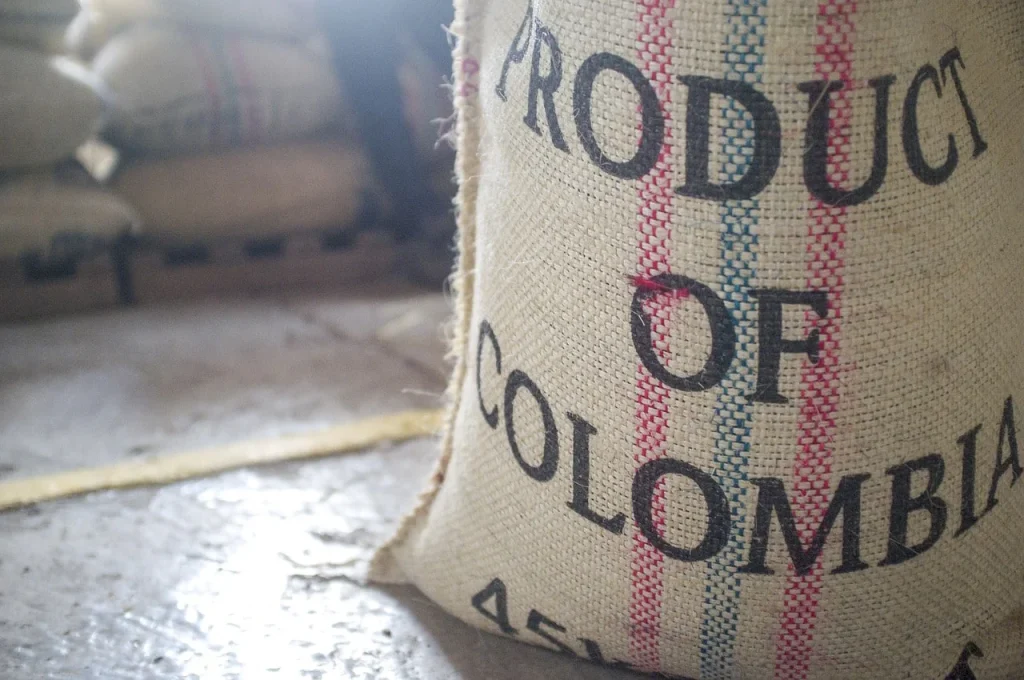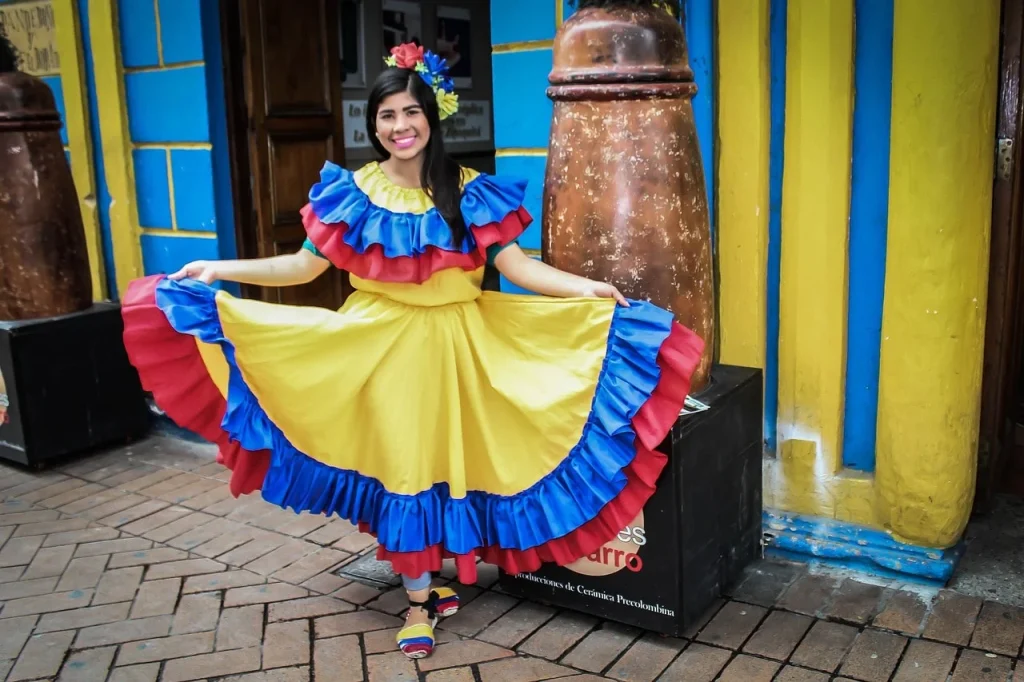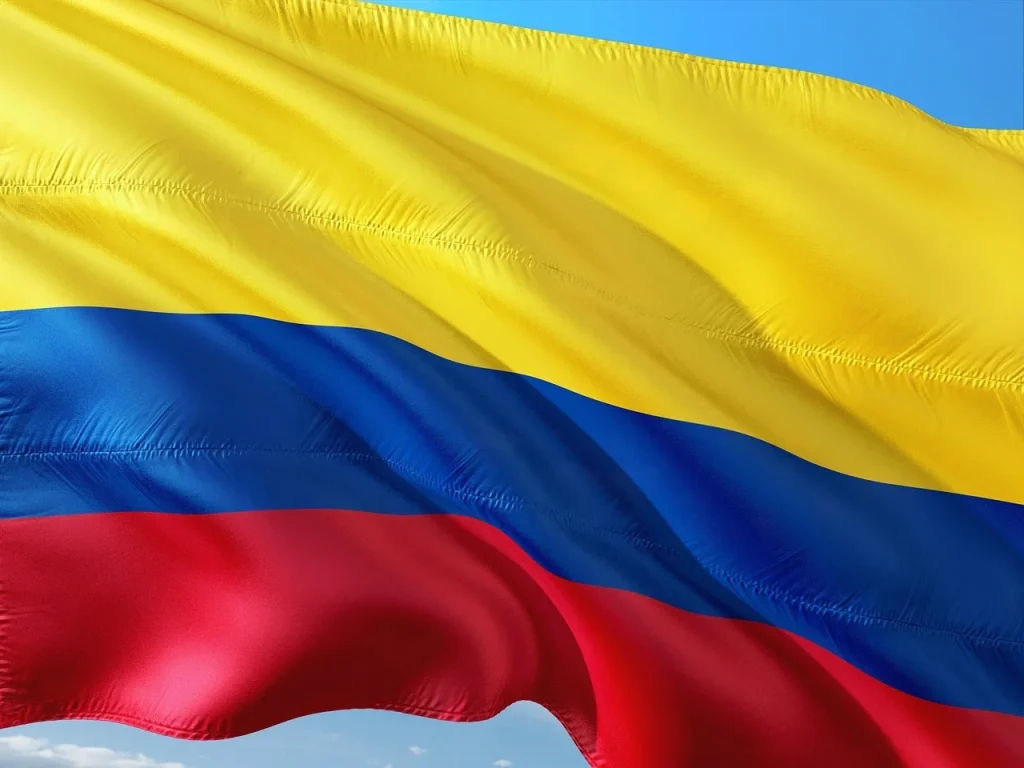What do you know about Colombia, aside from its reputation for producing some of the world’s best coffee? This South American jewel is full of surprises, from its rich cultural heritage to its stunning natural wonders.
In this article, we’re excited to share some interesting facts about Colombia that will give you a deeper appreciation of its history, biodiversity, and the resilience of its people. So buckle up as we take a thrilling ride through the heart of Colombia’s captivating stories and landmarks.
The only regret I will have in dying is if it is not for love.
Gabriel García Márquez
Colombia Facts
Get ready to discover Colombia! Read through the facts carefully because there’s a quiz waiting at the end to challenge your knowledge.
- The country is the world’s leading source of emeralds, producing about 90% of the global supply.
- Coffee from this region can fetch some of the highest prices worldwide due to its high quality.
- The concept of La Hora Loca, or “The Crazy Hour,” originated here, a vibrant festivity introduced during weddings and parties featuring masks, loud music, and dance.
- Caño Cristales, often called the “River of Five Colors,” displays a spectrum of colors due to an aquatic plant called Macarenia clavigera.
- The El Dorado legend started in this country, originally referring to the ritual of a tribal chief who covered himself in gold dust.
- The national tree, the wax palm, is among the tallest in the world and is found in the Cocora Valley.
- It has a town named Jerico, where carrying hammocks is a traditional and respected craft, integral to local culture.
- It is home to the world’s largest theater festival, the Iberoamericana, hosted every two years in Bogotá.
- Salsa music in Cali is a major cultural phenomenon, giving the city the nickname “The Salsa Capital of the World.”
- The pink dolphin, a rare species, inhabits the Amazon basin within its borders.
- Has a unique sport called Tejo, believed to be over 500 years old, involving throwing a metal puck/disc to hit targets filled with gunpowder.
- Rock al Parque in Bogotá is one of Latin America’s largest free rock music festivals.
- The Colombian Amazon, comprising about a third of the country, is sparsely populated and holds vast biodiversity.

- A traditional folk dance, Cumbia, originated among the African slaves brought to the coastal regions and has now become a symbol of national pride.
- Declared the happiest country in the world multiple times based on global surveys measuring emotional wellbeing and life satisfaction.
- Aracataca, the birthplace of Nobel laureate Gabriel García Márquez, inspired the fictional town of Macondo in his novel “One Hundred Years of Solitude.”
- One of the few countries in the world with coastlines on two major oceans: the Pacific and the Atlantic (Caribbean Sea).
- The “liquid rainbow” phenomenon occurs in the Serranía de la Macarena national park, a highlight for nature lovers.
- The Andean Condor, the national bird, has a wingspan of up to 3.3 meters, among the largest of all birds.
- Lost City (Ciudad Perdida), older than Machu Picchu, can only be accessed by a rigorous trek through the jungle.
- Known for a variety of climates, ranging from tropical and desert to mountainous and snowy conditions due to its topography.
- Boasts the only underwater museum in the Americas, located in the Caribbean Sea near Cartagena.
- Home to a unique natural phenomenon, the “River of Five Colors” or Caño Cristales, which turns a vivid array of colors between September and November.
- A favorite for bird watchers, hosting more species of birds than any other country in the world.
- The largest flower festival in the world, the Feria de las Flores, occurs in Medellín every August.
- During pre-Columbian times, indigenous groups like the Muisca were highly skilled goldsmiths, influencing the El Dorado myth.
- Paloquemao Market in Bogotá offers a vivid display of the country’s agricultural diversity, ranging from exotic fruits to fresh seafood.
- Home to a diverse array of landscapes, including deserts, tropical rainforests, and high-altitude glaciers.

- Orchids are the national flower, with over 4,000 different species growing throughout the country.
- Paramo ecosystems, which are unique to the Andes, are crucial for water regulation for the majority of the country’s population.
- Known for its significant progress in renewable energy, aiming to become a major player in solar and wind energy production.
- The country’s National Salsa Competition in Cali showcases some of the world’s best dancers.
- Malpelo Island, a UNESCO World Heritage site, is a haven for marine biodiversity, including large populations of sharks.
- Offers one of the longest continuous Christmas seasons in the world, starting in early December and ending in mid-January.
- Barranquilla’s Carnival is the second largest in the world, following Rio de Janeiro’s, and is a UNESCO recognized event.
- Every year, the Wayuu people of La Guajira host a cultural festival that showcases their traditional crafts, music, and dance.
- Simon Bolivar, a key figure in South America’s struggle for independence from Spanish rule, died in Santa Marta, leaving a significant historical legacy.
- It has been recognized for its progressive approach to peace, notably with the 2016 peace agreement that ended over 50 years of conflict with the FARC.

- Chiribiquete National Park, the largest national park in Colombia, is known as “The Sistine Chapel of the ancients” due to its ancient rock paintings.
- Is a leading player in the cut flower industry, especially for roses, exporting vast quantities primarily to the United States.
- Astrobiologists study its high-altitude lakes as analogs for early Mars conditions.
- Bogotá’s Gold Museum holds the largest collection of pre-Hispanic gold artifacts in the world.
- The traditional dish bandeja paisa includes components like beans, rice, pork, and avocado, symbolizing the agricultural abundance.
- Annual rainfall in the Chocó Department is among the highest in the world, making it one of the wettest places on Earth.
- Has a pioneering cycling culture, often highlighted in international competitions like the Tour de France and the Giro d’Italia.
- Tatacoa Desert offers one of the best stargazing experiences in the country due to its clear, dry skies.
- Interoceanic canals, such as the Panama Canal, were first envisioned to pass through the Isthmus of Panama, part of which was once Colombian territory.
- Palenquero, a Spanish-based creole, is spoken by the community of San Basilio de Palenque, recognized as a Masterpiece of the Oral and Intangible Heritage of Humanity by UNESCO.
- The “Festival of the Vallenato Legend” in Valledupar is a significant cultural event celebrating Vallenato music, a traditional Colombian genre.
- The unique spectacle of silleteros during Medellín’s Flower Festival features locals carrying elaborate flower arrangements on their backs, symbolizing the endurance and artistic expression of the Antioquian people.
Colombia Myths

Now that we’ve explored the facts, let’s continue with some common myths. We’ll separate truth from fiction and give you a clearer picture of this fascinating country.
- Colombia is Mostly Jungle
While it boasts significant rainforest areas, particularly in the Amazon, much of the country features mountains, plains, and coastal regions. Cities like Bogotá and Medellín are modern, bustling urban centers, and the landscape is quite diverse. - Colombian Cuisine is All About Spicy Food
Contrary to popular belief, traditional Colombian cuisine is not characterized by high levels of spice. Instead, it is known for its variety and richness, influenced by indigenous, Spanish, and African flavors, focusing more on savory than spicy. - Colombia is Unsafe for Tourists
Significant improvements have been made to it’s security over the past decades. Popular tourist areas and cities are generally considered safe, though it is advised that standard precautions be observed, as would be prudent in any country. - Drug Trafficking Dominates Colombia’s Economy
While it was once notorious for drug trafficking, today its economy is supported by a variety of sectors such as finance, agriculture, and tourism. Coffee, flowers, and bananas are some of the main legal exports enjoyed globally. - The Weather in Colombia is Always Hot
It’s climate is incredibly varied due to its topography. While coastal areas and lowlands experience hot temperatures, cities like Bogotá, located at higher altitudes, often have a mild climate. In the mountains, it can even get quite cold.
No products found.
Colombia Quotes

Colombia’s identity unfolds through these powerful quotes. Feel free to share yours in the comments so I can add them to the list as well.
I’m a writer from Colombia, the land of magical realism. I am always chasing the magic and the enchantment.
Juan Gabriel Vásquez
Juan Gabriel Vásquez, a Colombian author, encapsulates his connection to his homeland, known for its magical realism, a genre his works frequently delve into.
In Colombia, music is a tradition. It’s part of us and it’s what we love.
Shakira
Shakira, the internationally famous singer from Colombia, emphasizes the deep-rooted musical culture of her country, highlighting its significant influence on her career.
I’ve always said that playing rugby in Colombia is like being a bullfighter in Japan.
Jamie Salazar
Jamie Salazar humorously comments on the obscurity and challenges of playing rugby in Colombia, a country more famed for its passion for soccer.
My paintings are a response to the magical realism that is the life in Colombia.
Fernando Botero
Fernando Botero, renowned for his voluminous depictions in art, speaks to how his work is a vibrant, exaggerated reflection of everyday Colombian life, echoing the country’s magical realism.
In Colombia, we have these amazing landscapes and a rich complexity that is often not understood even by Colombians themselves.
Juanes
Juanes, a popular Colombian musician, describes the diverse and intricate beauty of Colombia’s landscapes, stressing the depth and complexity of his homeland.
Colombia FAQ

Before you move on to the quiz, take a moment to read our FAQs. Read carefully if you want to be crowded as a Colombian expert.
- What is Colombia known for?
It is renowned for its rich coffee, vibrant culture, and the diversity of its landscapes, ranging from lush rainforests to stunning beaches and majestic mountains. - What is the capital of Colombia?
The capital of Colombia is Bogotá. It’s a high-altitude city known for its historical areas, modern business districts, and vibrant cultural scene. - What language is spoken in Colombia?
Spanish is the official language. It’s spoken by the vast majority of the population, with a variety of local accents and dialects. - What is a popular dish in Colombia?
Bandeja Paisa is a popular Colombian dish. It typically includes rice, beans, ground meat, plantain, chorizo, arepa (corn cake), avocado, and a fried egg. - What are the main economic activities in Colombia?
Its economy is diversified, with major activities including agriculture (especially coffee and flowers), oil production, mining, and manufacturing.
No products found.
Colombia Trivia

Welcome to our challenge! If you don’t get any questions right, you might just find yourself kidnapped by a band of salsa dancers, destined to shimmy forever!
Conclusion
Our exploration of Colombia has been an epic journey through a country rich in diversity and steeped in culture. From its revolutionary history to its modern-day achievements, it continues to fascinate and inspire.
The enduring spirit of its people shines through in their art, music, and daily lives. As you reflect on this vibrant country, think about the endless possibilities it holds for future visitors and the lasting impact of its cultural heritage. Till next time, stay curious and explore more. Cheers.


